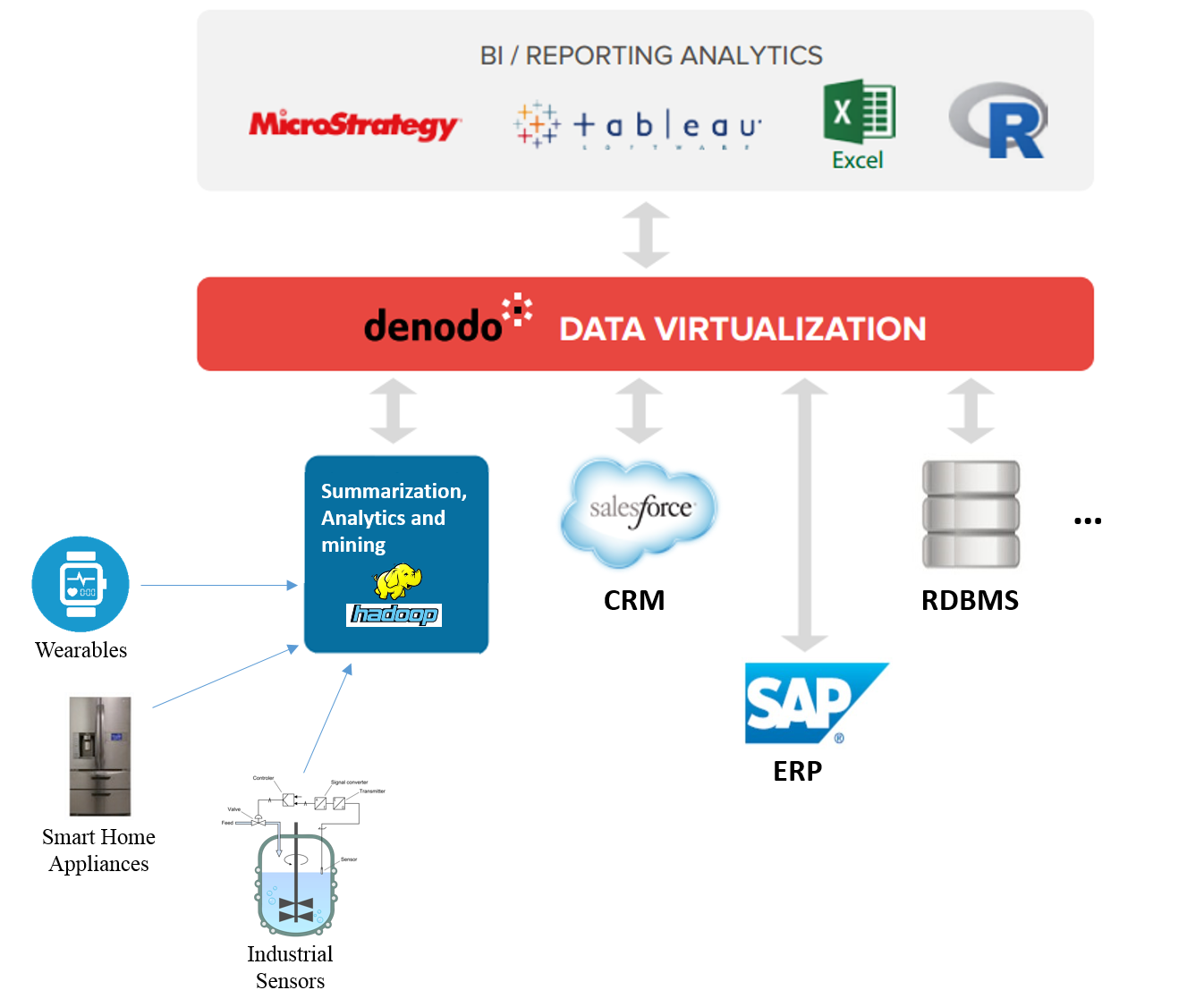
Make data virtualization the crucial link to your Fast Data Strategy.
Enterprises are quickly adopting data management strategies to derive value out of Fast Data. What is Fast Data? Fast Data or data in motion is streaming data generated at the speed of thought by IoT, Mobile and Cloud technologies and their convergence. This has changed the way enterprises plan and implement their data architectures and their data management strategy. They have realized that gathering and storing huge volumes of data – current or historical – for exploration and analysis is a limited strategy. Businesses today need to act in real time, as data flows into the organization from millions of endpoints such as sensors, mobile devices, connected cars, fitness monitors and connected industrial systems.
Enterprise data today is not very different from a tomato that travels from a farm to table or sits in the kitchen refrigerator waiting to be cooked. Data is organic and perishable. It is a living, breathing entity with a shelf life. It lives in a time continuum. It is not a static and a stationary asset anymore. It travels from business function to business function acting as the information fuel for making both critical and non-critical decisions. The speed of this data differs at each stage of its movement across the organization.
Fast Data is the metamorphosis of Big Data or data at rest into a fast-moving giant along the enterprise information pipeline. The action and decisions a company makes using the data they collect depends on which stage of the data pipeline this data is in. The best use of this data is when it is new, current and as it originates and is in motion. To handle fast data better companies must merge the capabilities of operational databases, real-time analytics, and stream processing.
Since fast data and big data have different requirements, it is crucial to have an architectural layer to abstract the ingested data, combine it and publish it to perform real real-time analytics and make data-driven decisions on each event or transaction. Data Virtualization provides this abstraction layer to access and combine these different types of data from databases, applications as well as event streams. The combined data is then published as views to consuming applications to make use of for BI Analytics or operations.
The Denodo Platform can be used to combine streaming data from equipment sensors, stored in a Big Data repository with data from a CRM system, for example, that holds customer support ticketing data and/or revenue data from sales. This is valuable insight that can help make informed business decisions in time, on offering location based discounts for customer satisfaction and retention.
 Fast Data enables enterprises to think on their feet to make powerful decisions in real-time to drive sales, connect with customers, inform business processes, and create value. The Denodo Platform 6.0 is designed to serve as your critical ally and link for an effective Fast Data Strategy.
Fast Data enables enterprises to think on their feet to make powerful decisions in real-time to drive sales, connect with customers, inform business processes, and create value. The Denodo Platform 6.0 is designed to serve as your critical ally and link for an effective Fast Data Strategy.
If you want to learn more about how Fast Data Strategy helps boost your organization, register to the world’s first Fast Data Strategy Virtual Summit where you will find 20+ sessions about accelerating your Fast Data Strategy for BI, Cloud and Big Data.
- Capitalize on the Enterprise Data Services Marketplace - May 24, 2016
- Stop Searching Heaven and Earth for Data - May 9, 2016
- Drinking from the fire hose of Fast Data? - March 21, 2016
